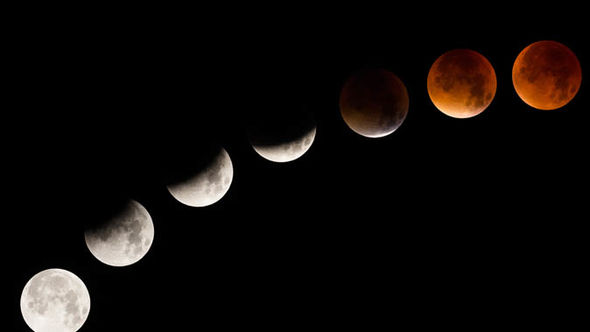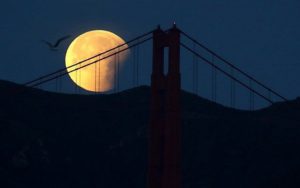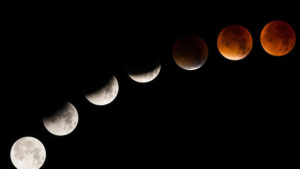

The rare Super Blue Blood Moon is about to happen for the first time in 150 years!
Early Wednesday morning brought a lunar event that hasn’t been seen since 1866.
It was at least partially visible in all 50 U.S. states, though the views were better the farther west you live.
Let’s break this down. This event – called a super blue blood moon – was actually three fairly common lunar happenings all happening at the same time.
And scientists say that information gathered during the event could help them figure out where to land a rover on the moon.
What is a super blue blood moon?

The moon is full, and it’s the second full moon of the calendar month, which has been termed a blue moon. The moon is on a 28-day cycle, so that happens only once in a while – or, as you might say, once in a blue moon.
Next, the moon is known as a supermoon because it’s especially close to the Earth, making it appear larger and brighter than usual. The moon doesn’t orbit Earth in a perfect circle – it’s an ellipse, which means there are times during the orbit that it is thousands of miles closer to Earth than others. Brian Day of NASA’s Ames Research Center tells NPR that during these times, the moon can “appear 17 percent larger than it does at its furthest point in its orbit.”
Most interesting to scientists, however, is that this is all coinciding with a total lunar eclipse. That’s why this is also called a blood moon, Day says: “As the moon makes this close, full moon approach to the Earth, it’s going to pass through the Earth’s shadow and the Earth’s shadow is going to cause the moon to appear a deep red color.”
“You’ve got this wonderful combination,” Day says. “It’s just loading up the plate with all the wonderful things the moon can show us.”
Did I miss it?
Yes. Everyone in the U.S. could see at least some portion of the eclipse, with the best views in Western states.
On the East Coast, the eclipse began at 5:51 a.m. local time, but the moon set before the end of the eclipse’s totality. “The darker part of Earth’s shadow will begin to blanket part of the Moon with a reddish tint at 6:48 a.m. EST, but the Moon will set less than a half-hour later,” NASA said. For East Coasters, the best bet for good viewing was around 6:45 a.m. ET.
It was easier to see in the Central time zone because the moon will be higher in the sky when the eclipse begins. The red shadow was observable by 6:15 a.m. ET. In Mountain time, the peak was around 6:30.






























